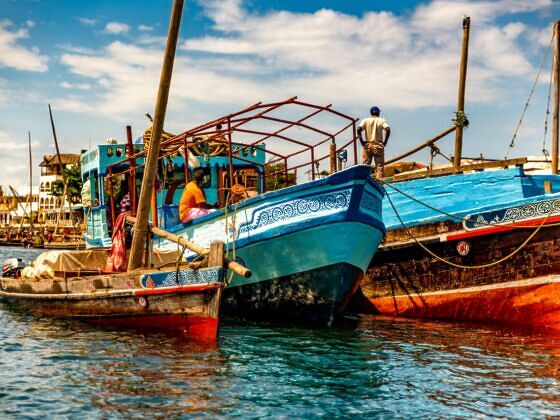The Swahili Coast is an ancient place where cultures have met and blended during ten centuries of trade. Lamu Town, on Lamu Island off the north Kenya coast, is the purest expression of Swahili culture remaining.
Getting there
Lamu Island is one of the larger islands of the archipelago by the same name that lie scattered along the Kenyan coast just south of the border with Somalia.
